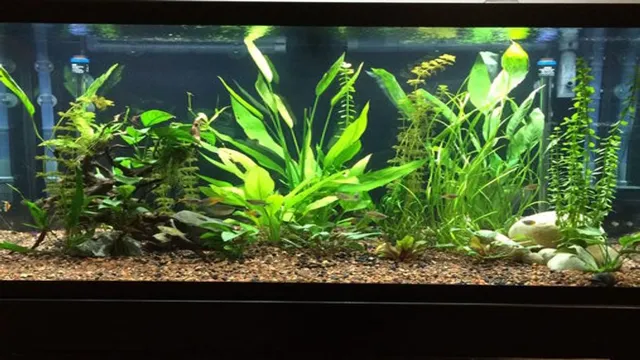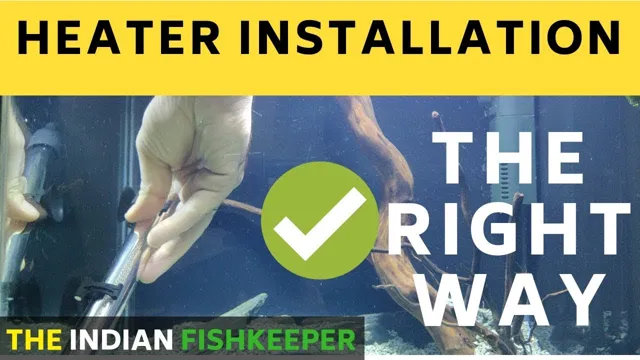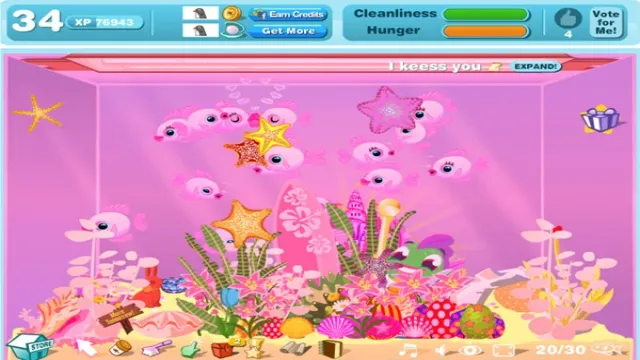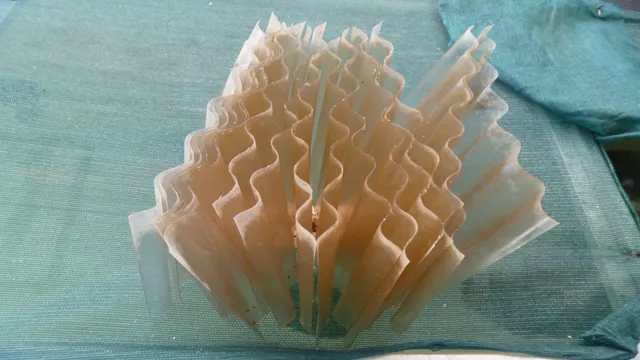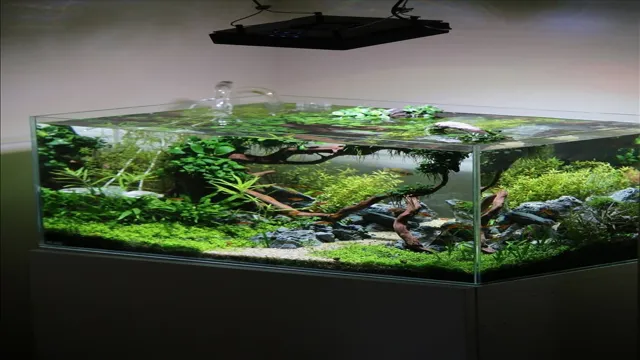Have you noticed that your aquarium fish is not as lively as usual? Is it displaying symptoms of illness or injury that seem to be causing discomfort? The thought of having to euthanize a pet is never easy, but it may be necessary to prevent further suffering. However, many fish owners are unsure about the methods and safety measures involved in humanely putting down their aquatic pets. Thankfully, with the right knowledge and precautions in place, euthanizing aquarium fish can be done safely and effectively.
Different methods are available, each with its own set of pros and cons, but the most commonly used techniques involve using clove oil or are done through the use of stunning, where the fish is put to sleep first before being euthanized. In this blog, we will explore these methods more closely and provide you with step-by-step instructions on how to perform them. Additionally, we will also discuss important safety precautions, such as properly disposing of the fish’s remains and avoiding harm to other pets and humans.
While the decision to euthanize an aquarium fish may be difficult, it is important to prioritize their well-being and minimize suffering. So, if you find yourself in this situation, don’t fret – arm yourself with knowledge and act responsibly to ensure a peaceful and dignified passing for your beloved fish.
Why Euthanasia is Necessary
While it may seem somewhat inhumane to think of killing a pet fish, sometimes euthanasia can be a necessary step in order to prevent any unnecessary suffering. In the world of aquariums, there are a number of reasons why fish may need to be put down. For example, if a fish is suffering from a serious illness or injury and there is no hope for them to recover, the best option may be to put them to sleep.
This is where the search for “how to kill aquarium fish” comes in. While there are a few methods that can be used, such as an overdose of clove oil or a quick blow to the head, it’s important to remember that such actions must be taken with care and consideration. Ultimately, making the decision to perform euthanasia should always be done with the fish’s best interests in mind.
Saving Other Fish
Euthanasia is a tough topic to tackle, especially when it comes to our aquatic friends. However, it is often necessary in order to save the lives of other fish in a tank or pond. When a fish becomes ill or injured, it can spread diseases or cause harm to the other fish in its vicinity.
Thus, euthanasia can prevent the spread of infection and protect the other fish from suffering, as well. Making the decision to euthanize a fish can be difficult, but it is important to remember that it is done out of compassion for both the fish and the rest of the aquatic community. It is essential that proper protocols are followed to minimize any pain or stress to the fish in their final moments.
While it may be hard to say goodbye to a beloved pet or aquatic animal, it is crucial to prioritize the safety and well-being of all creatures in the habitat. The responsible and humane decision to euthanize a fish can ultimately help save others from harm.
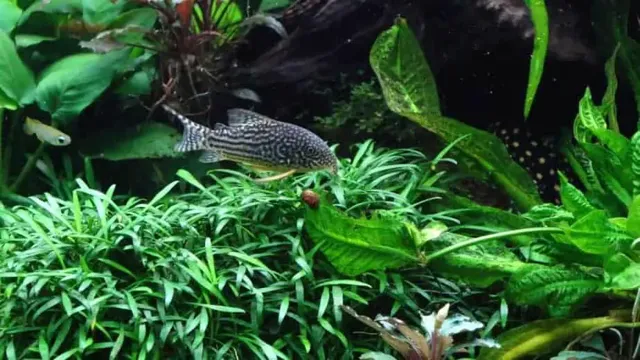
Preventing Suffering
Euthanasia is a topic that has been debated for decades, with strong arguments on both sides. However, when we consider the prevention of suffering, it becomes clear that euthanasia is necessary. For those experiencing unbearable pain or terminal illnesses, the option of a peaceful and dignified death is a vital one.
It allows individuals to maintain a sense of control over their own lives and deaths, and to avoid prolonged and unnecessary suffering. While some argue that euthanasia goes against the sanctity of life, it can be seen as a compassionate act that spares individuals from debilitating pain and emotional distress. Ultimately, the decision should be left to the individual and their loved ones, as they are the ones who must bear the burden of suffering.
By providing the option of euthanasia, we can ensure that those facing painful and irreversible conditions are able to pass with dignity and without unnecessary pain.
Methods of Euthanasia
If you are faced with the difficult decision of having to euthanize your aquarium fish, there are several methods that can be utilized. The most humane way to do so is to first anesthetize the fish by adding clove oil to the water. This will put the fish to sleep and they will not feel any pain. (See Also: How to Build Reef Aquarium Sump: A Complete Guide for Beginners)
After this, you can use an overdose of benzocaine or tricaine methane sulfonate to euthanize the fish. Another method would be to use a sharp blow to the head or cervical dislocation, but these methods are considered less humane and should only be used if the anesthetic method is not an option. It is important to remember that euthanasia should only be considered if the fish is suffering and there are no other options available.
It can be a difficult decision to make, but with the use of proper methods, you can make the process as painless as possible for your aquatic pet.
Using Clove Oil and Alcohol
One method of euthanasia that has been used for decades involves the use of clove oil and alcohol. This method is primarily used to euthanize fish but has also been used on other small animals. To use this method, a small amount of clove oil is mixed with alcohol, usually in a ratio of 1:10, and then added to the tank or container of the animal.
The animal will quickly become sedated and then pass away painlessly. While this method is considered to be humane, it should only be performed by professionals who are trained in its use. It’s important to note that this method should only be used when all other options have been exhausted and euthanasia is deemed necessary for the animal’s well-being.
Using clove oil and alcohol should not be taken lightly, and careful consideration and thought should be given before moving forward with this method.
Freezing Your Fish
When it comes to euthanizing fish, there are a few different methods to consider. One common method is freezing the fish. This involves placing the fish in a plastic bag and then in the freezer, where they slowly lose consciousness and eventually pass away.
While this may seem like a humane option, it’s important to note that it can take several hours for the fish to die using this method. Additionally, it’s crucial to ensure that the fish is placed in a plastic bag with enough water and air to prevent suffocation or freezing damage. Overall, freezing is a viable option for euthanizing fish, but should only be done with caution and proper considerations for the animal’s well-being.
Pithing the Fish’s Brain
When it comes to euthanizing fish, there are a variety of methods available. One such method is pithing the fish’s brain. This involves taking a sharp object such as a needle or knife and inserting it into the brain through a small hole in the skull.
The goal here is to destroy the brain and prevent the fish from experiencing any further suffering. While this may seem like a harsh method, it is actually quite humane and effective when done properly. In fact, many fish farmers and researchers utilize this technique as a means of quickly and painlessly euthanizing fish.
However, it is important to note that this method should only be performed by those who are trained and experienced in the process to ensure that it is done correctly.
Proper Disposal of Dead Fish
If you are considering euthanizing your aquarium fish, it is important to do it in a humane manner and dispose of the body properly. One recommended method for killing fish is to use clove oil. Mix a few drops of clove oil with water and add it to a separate container filled with aquarium water.
Then, transfer your fish to the container and wait for it to lose consciousness. Once your fish are no longer responsive and are confirmed dead, you can bury them outside or dispose of them in the trash. Do not flush your dead fish down the toilet as this can introduce harmful bacteria into the water. (See Also: How to Make a Large Aquarium: Tips and Tricks for Creating a Stunning Fish Habitat)
By practicing proper disposal methods, you can ensure the health and safety of other aquatic animals and prevent any potential harm to the environment.
Protecting Your Environment
Proper Disposal of Dead Fish to Protect Your Environment While it may seem like a quick and easy solution to throw dead fish in the trash, it can actually have harmful effects on the environment. Dead fish can release bacteria and other pollutants into the surrounding soil and water, which can in turn harm local wildlife and contaminate drinking water. So what is the best way to dispose of dead fish? The answer is burial.
By burying dead fish deep enough, the soil can help break down the fish and prevent it from contaminating the surrounding area. Another option is to compost the fish, which can provide valuable nutrients to your garden soil. However, it is important to never bury or compost fish near a body of water to prevent further contamination.
Remember, proper disposal of dead fish may take a little extra effort, but it is worth it to protect the environment and the health of local wildlife.
Avoiding Contamination
Proper Disposal of Dead Fish Have you ever wondered what to do with a dead fish? Whether you’re a professional angler or a simple hobbyist, it’s important to know how to dispose of a dead fish properly. Not only does it prevent contamination from spreading, but it also shows respect for the fish and the environment. One of the simplest ways to dispose of a dead fish is to bury it in the ground.
Dig a hole deep enough to prevent scavengers from digging it up, and then place the fish in the hole and cover it with dirt. This method not only returns the nutrients to the ground but also prevents scavengers from potentially spreading disease. Another option is to place the dead fish in a plastic bag and throw it in the trash.
However, this method should be a last resort since it could contaminate landfills and harm other organisms. Make sure to double-bag the fish to prevent any foul odors from escaping and attract scavengers too. For larger fish, such as those caught in the ocean, it’s best to consider having them disposed of by a professional service provider that specializes in the proper disposal of dead animals.
This will ensure that the fish are disposed of in an environmentally friendly manner, rather than just thrown in a landfill. Overall, proper disposal of dead fish is crucial to prevent the spread of disease and contamination to the surrounding environment. Give the fish the respect they deserve by disposing of them properly.
It’s good for the fish and our ecosystem.
Conclusion
It’s important to remember that killing aquarium fish is never the desired outcome. However, if you absolutely must do so, there are a few ways to go about it. You could try drowning them with too much food, or exposing them to extreme temperatures.
But really, the best way to kill aquarium fish is to simply give them away to someone who will properly care for them. Remember, just because they’re small and swimming in a glass box doesn’t mean they don’t deserve respect and proper care. Let’s strive to be responsible pet owners and not resort to cruel methods of disposal. (See Also: How to Clean Aquarium Undergravel Filter: A Step-by-Step Guide to Sparkling Water)
“
FAQs
What are some common methods to kill aquarium fish?
It is not recommended to intentionally kill aquarium fish. If a fish is sick or injured, humane euthanasia methods should be used to minimize pain and suffering.
Can overfeeding lead to fish death in an aquarium?
Yes, overfeeding can cause excess waste and harmful bacteria to develop in an aquarium, eventually leading to death of fish.
Are there any fish species that are more prone to death in an aquarium?
Some fish species are more sensitive to changes in water quality and may be more prone to death in an aquarium, such as certain types of tropical fish and delicate marine species.
Can using tap water directly in an aquarium lead to fish death?
Tap water may contain harmful chemicals such as chlorine and heavy metals that can kill fish if not treated properly before adding to an aquarium.
Is it necessary to quarantine new fish before adding to an aquarium?
Yes, quarantine is highly recommended to prevent introducing diseases or parasites into an existing aquarium which can lead to fish death.
Are there any natural remedies to prevent fish death in an aquarium?
Maintaining a healthy environment with proper water filtration and conditioning, regular water changes, and appropriate feeding can help prevent fish death in an aquarium.
Can overcrowding cause death in an aquarium?
Yes, overcrowding can cause stress, competition for resources, and poor water quality, which can lead to fish death in an aquarium.

